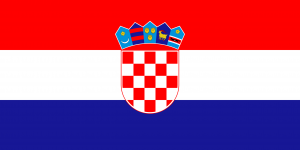Language/Croatian/Culture/History-and-Geography
As a Croatian language teacher with over 20 years of experience, I am thrilled to introduce you to the rich history and geography of Croatia. In this lesson, we will discover some of the significant landmarks, cities, and regions that shape Croatian culture and society. Let's get started!
After mastering this lesson, these related pages might interest you: Contemporary Croatian Culture Scene & Religion and Spirituality in Croatia.
History
Croatia's history has been shaped by various civilizations enriching the country's culture. Here are some notable historical facts:
- Croatia was initially inhabited by the Illyrians, an ancient Indo-European people.
- The Croats, a Slavic tribe, arrived in the 7th century and founded the Croatian principality.
- From the 11th to the 20th century, Croatia was part of different empires, such as the Hungarian Kingdom, the Ottoman Empire, and the Austro-Hungarian Empire.
- In 1991, Croatia became an independent nation after the breakup of Yugoslavia.
Geography
Croatia boasts a diverse landscape with over a thousand islands, lakes, rivers, and mountains. Here are some fascinating geographic facts:
- Croatia is located in southeastern Europe, sharing borders with Slovenia, Hungary, Serbia, Bosnia and Herzegovina, and Montenegro.
- The coast of Croatia stretches over 1777 kilometers along the stunning Adriatic Sea.
- The country has eight national parks, including the Plitvice Lakes, the Krka Waterfalls, and the Paklenica Canyon.
- The largest city in Croatia is Zagreb, the capital, with a population of approximately one million people.
Landmarks and Cities
Croatia has many notable landmarks and cities that have played significant roles in shaping the country's history and culture. Here are some places worth mentioning:
Dubrovnik
Dubrovnik is a stunning medieval walled city located on the southern coast of Croatia. Its old town is a UNESCO World Heritage Site and is famous for its picturesque narrow streets, historic buildings, and scenic seaside walls.
Split
Split is the second-largest city in Croatia and the largest city on the Dalmatian coast. The city center is a UNESCO World Heritage Site, and the main attraction is Diocletian's Palace, an ancient Roman palace that has been turned into a vibrant living area full of shops, restaurants, and bars.
Hvar
Hvar is a gorgeous island in the Adriatic Sea with stunning beaches, quaint villages, and a vibrant nightlife scene. The town of Hvar also boasts a historical cathedral, one of the oldest public theaters in Europe, and a Franciscan monastery built-in 1461.
Zagreb
Zagreb is the capital city of Croatia and the country's political, economic, and cultural center. The city's attractions include the Museum of Broken Relationships, the Zagreb Cathedral, the Croatian National Theatre, and the St. Mark's Church.
Regions
Croatia has many regions, each with its unique cultural, historical, and geographical significance. Here are some of the country's notable regions:
Istria
Istria is a peninsula in the northwest of Croatia, along the border with Slovenia and Italy. Istria has a long coastline, beautiful beaches, quaint seaside towns, and numerous vineyards producing high-quality wines.
Dalmatia
Dalmatia is a region along the central to the southern part of the Croatian coast, with stunning natural landmarks, including the Krka Waterfalls and the Paklenica Canyon. Dalmatia is also famous for its vibrant nightlife and excellent cuisine.
Slavonia
Slavonia is a region located in the eastern part of Croatia, along the Hungarian and Serbian borders. Slavonia is known for its delicious local cuisine, excellent wines, and colorful folk costumes.
Conclusion
Croatia's rich history and geography have significantly influenced the country's culture and society. Whether you are interested in exploring Croatia's old towns, swimming in its crystal clear waters, or indulging in its delicious cuisine, Croatia has something to offer for everyone.
I hope you found this lesson informative and interesting. In the next lesson, we will delve into the arts and entertainment in Croatia, exploring the country's cinema, music, literature, and art.
Sources
Finished this lesson? Check out these related lessons: Travel and Tourism & Education and Intellectual Life.
Other Lessons
- Daily Life and Customs
- Society and Lifestyle in Modern Croatia
- Croatia Timeline
- Travel and Tourism
- Education and Intellectual Life
- Sports and Recreation in Croatia
- Traditions and Festivals
- Croatian Folklore and Mythology
- Religion and Spirituality in Croatia

